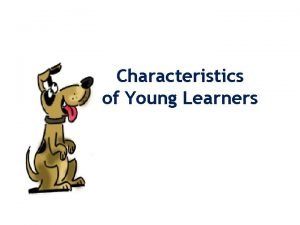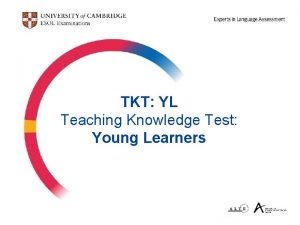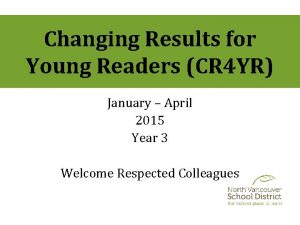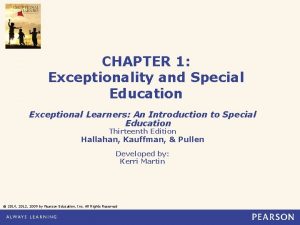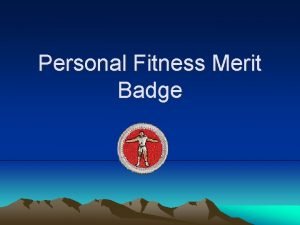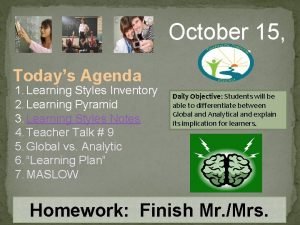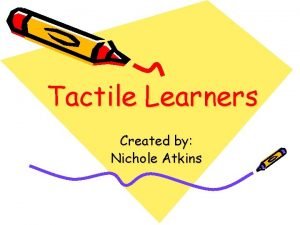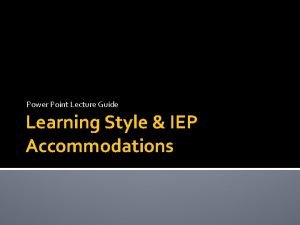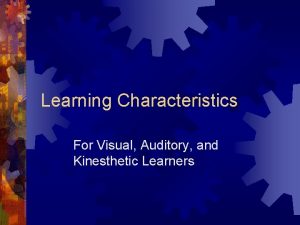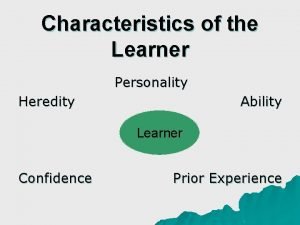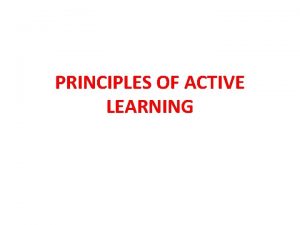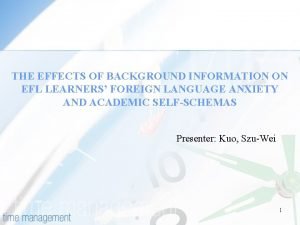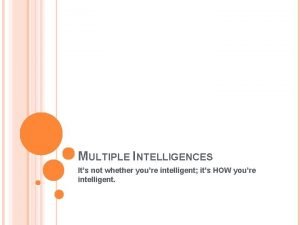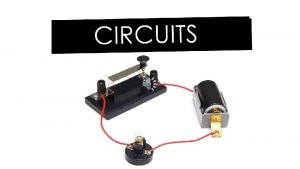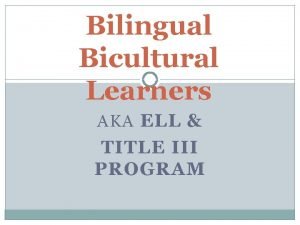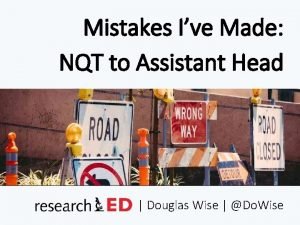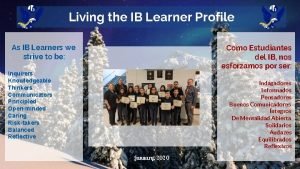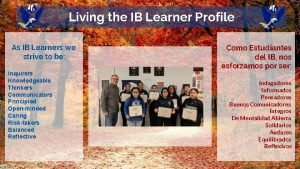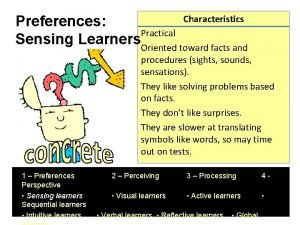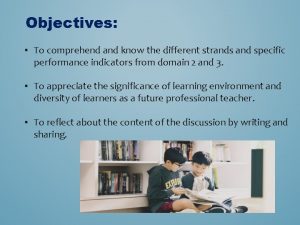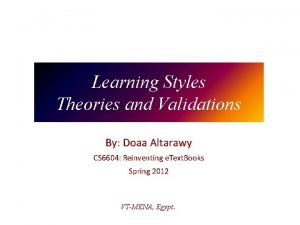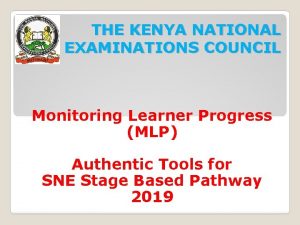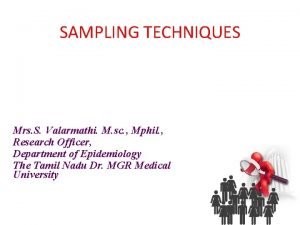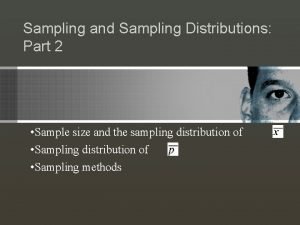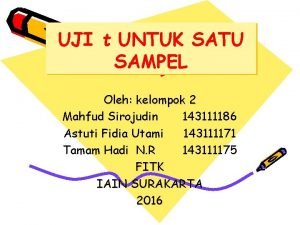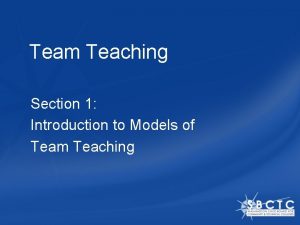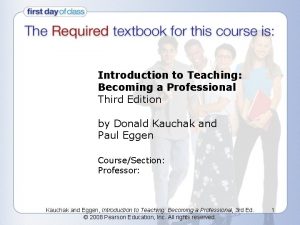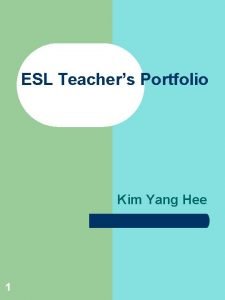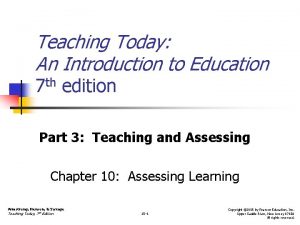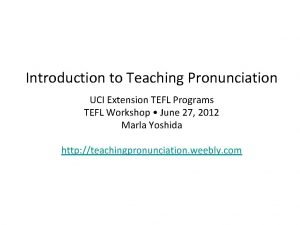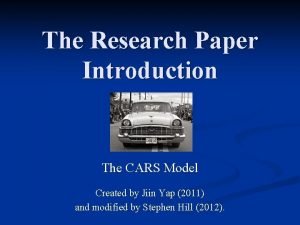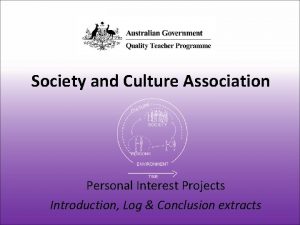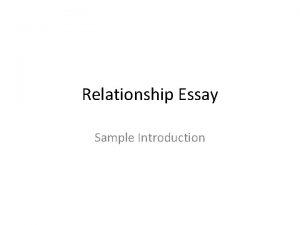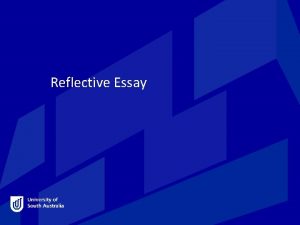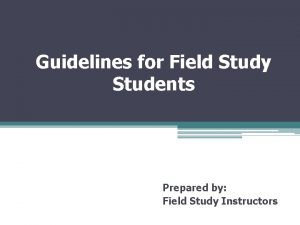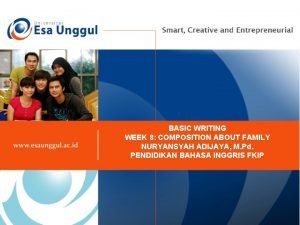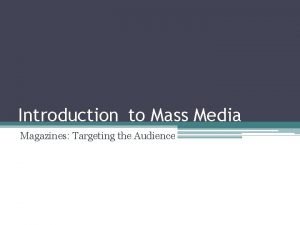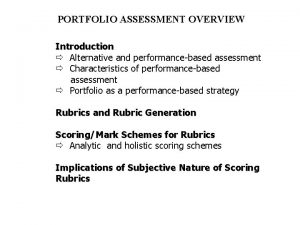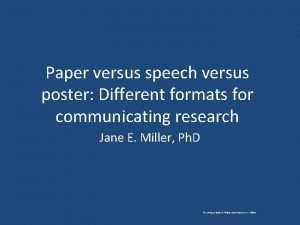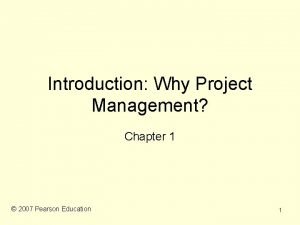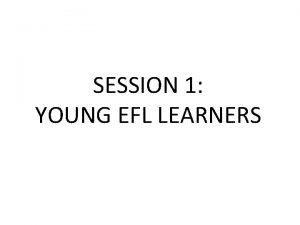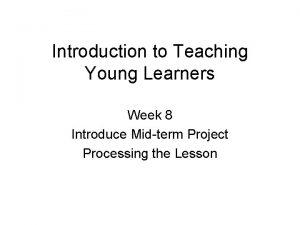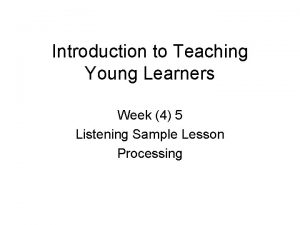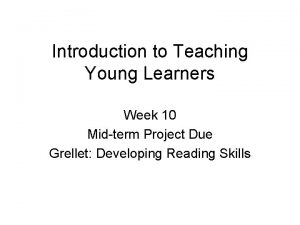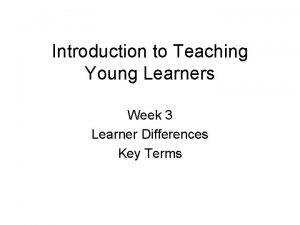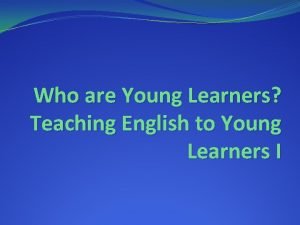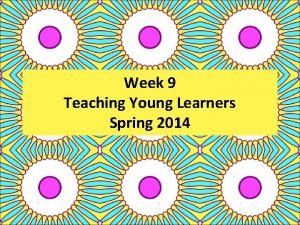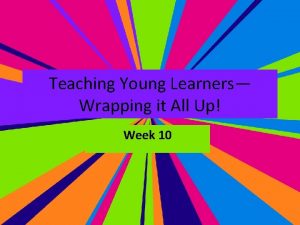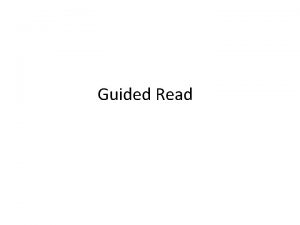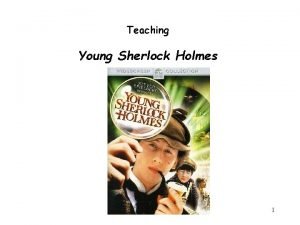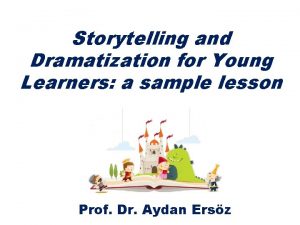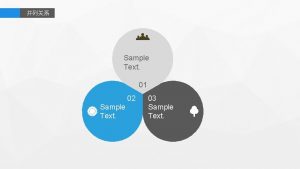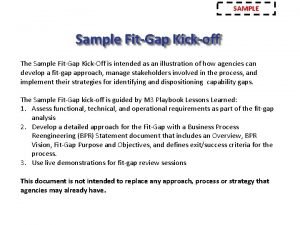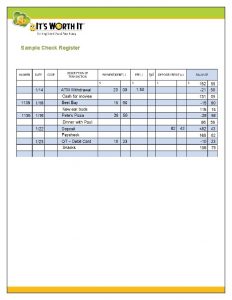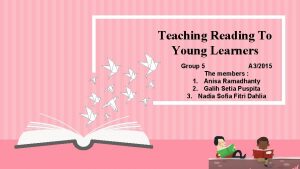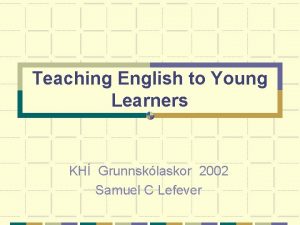Introduction to Teaching Young Learners Week 12 Sample






































































- Slides: 70

Introduction to Teaching Young Learners Week 12 Sample Reading Lesson Processing

What’s left: • Week 12: Sample Reading Lesson (Upper Elementary – Reluctant Readers). Processing in terms of sequencing • Week 13: Processing Sample Reading Lesson (Upper Elementary – Advanced Readers). How to make it more suitable for more advanced readers • Week 14: Introduce final project. Discuss grammar instruction. “Click Clack Moo Cows That Type” walk through (Integrated Skills: Reading to Writing) • Week 15: Conferencing on rough draft of route map & review • Week 16: Evaluation & Survey - Final projects are due

Homework for Next Week • Final Project Preparation: – Decide if you will do Reading or Writing – Decide age & Level of Ss – Pick and age appropriate topic with age appropriate activities • Discuss “The Place of Grammar Instruction in the Second/Foreign Language Curriculum” Qs p. 129

Warm-up • What is a reluctant reader? • What are some reasons for a learner to be a reluctant reader? • How can we help learners who are reluctant readers?

Sample Reading Lesson • This is a reading lesson that is appropriate for upper Elementary Learners • The reading text was taken from a 2 nd grade middle school textbook. • The text is entitled: Holidays in Fall.

What is this? Halloween

What are these? Holidays

What is it? ghost

pray

temple (“Jinja” in Japanese)

throw

trick or treat This is what children say to get candy on Halloween.

trouble You will be in ____ if you do something bad.

celebrate • This is what we do for things like holidays, birthdays, or if we win the World Cup.

traditional • Hanbok is _____ Korean clothing.

Which one is “traditional”? kimchi pizza

harvest Farmers _____ the crop when it is ready.

growth This is what happens when someone or something gets older and bigger.

Which countries have these holidays?

Which title and which picture? • Directions: please look at the following titles and pictures and try to match the correct ones to the stories on your papers.

Which title and which picture? The Tomato War Festival in Spain Shichi-go-san Day 1 Ghosts on Halloween 2 3

Checking Predictions Directions: Please read the text again. Check your predictions and answer the questions below. Questions: 1. Which country has Halloween? 2. Where is the Tomato War Festival? 3. Where is the holiday “Shichi-go san” from?

Answers 1. Which country has Halloween? America 2. Where is the Tomato War Festival? Spain 3. Where is the holiday “Shichi-go san” from? Japan

TYPHOON GAME 1 2 3 4 5 6 7 8 9

Question 1 • 20 points • When did The Tomato War Festival start? • 1944 • Back

Question 2 • TYPHOON! (50 points) • When (age) do girls go to Jinja for Shichi-gosan Day? • When they become three (3) and seven (7). • Back

Question 3 • 30 points • Who celebrates The Tomato War Festival? • The Spanish people. • Back

Question 4 • 40 points • What do children say to get candy on Halloween? • Trick or treat • Back

Question 5 • TYPHOON! (50 points) • What do people do on The Tomato War Festival? • They throw tomatoes at others. • Back

Question 6 • 30 points • Where do children go on Shichi-go-san Day? • The go to Jinja (temple). • Back

Question 7 • 20 points • When is Halloween? • October 31. • Back

Question 8 • TYPHOON! (50 points) • What do children dress up as on Halloween? • They dress up as ghosts and monsters. • Back

Question 9 • 20 points • When is Shichi-go-san Day? • November 15. • Back

Post Activity • What are some important of special holidays in Korea?

Review • How are reading lessons stage? • What happens in each stage? • What were some of the example activities for each stage in this sample lesson?


In the Pre-Stage 1. 2. 3. 4. 5. activate schema assess prior knowledge generate interest in the topic build rapport with our Ss elicit and/or pre-teach the key vocabulary words.

In the During Stage • Ss are given tasks to give them a reason to read or listen • Tasks are given before Ss read or listen • Task allow Ss to demonstrate understanding • Tasks are sequenced – General to Specific – Easy to Difficult – Concrete to Abstract

In the Post Stage • Ss have a chance to move beyond the text • Ss are allowed to personalize the topic or theme • Ss integrate other skills • Ss make “text to self” and “text to world” connections by doing tasks that allow them to see how the topic is relevant to them and their world

Processing • How did the T activate schema? • How did T check Ss background knowledge? • How did the T pre-teach and check the new vocab? Could the T have done anything else in the Pre-stage to prepare the Ss to be successful? What and Why?

Processing • What did the first reading activity assess? Was it appropriate for low level Ss and reluctant readers? Why? • Why did the T give the quiz questions before he had the Ss play the Typhoon game? • If the T has already assessed Ss understanding of the reading, why does he play the Typhoon game?

Processing • What did the T do to support Ss when they were doing their Post activity? • Which of Grellet’s seven assumptions were used during this reading lesson? (p. 223) • How could T have used chunking in this lesson? • How could the Ss have done this lesson as a jigsaw reading? What kind of support would the T need to give the Ss in order for the Ss to do the jigsaw reading successfully?

Teaching Reading to Advanced Learners • Do advanced learners have the same needs as lower level learners? If no, how are their needs different? • What determines the challenge level of a text-based compression activity, the text or the activity? • How can we make an easy text more challenging for high level Ss?

Jigsaw vs. Selective Reading • • What is a jigsaw reading activity? What is a selective reading activity? How are they the same? How are they different?

Jigsaw Reading • With high level learners how could we adapt last week’s lesson using a Jigsaw Reading? – What could we do in the Pre? – What could we do in the During? – What could we do in the Post?

Pre-Teaching Vocabulary Word List Rather than Pictures • • • Holiday Ghost Throw Trick or treat Trouble Celebrate • • • Harvest Pray Temple Growth Traditional Groups gets some post it notes. Ss put post it note next to word they know T has Ss explain words to each other

Pamphlet Style Graphic Organizer • On the front is a general type Questions – What is the passage about? – What is the best title (Multiple choice)

Mind Map Graphic Organizer • Ss would organize: – – When Where What Who • The organizer and stories would be color coded, so Ss would know where to write what

How could T have used chunking in this lesson? • big PRE – little pre – little during • big DURING • big POST Chunk 1 Chunk 2

Choosing Vocabulary • What do we mean when we say, we preteach the key words? What are key words?

Find the Key Words • Key words are the words that unlock the text. They help Ss understand the Main Ideas and Significant Details • Not all difficult words are key words: Why don’t we teach all difficult words? • Read the listening script on p. 103. – Underline all the words that you think the Ss will have trouble with – Circle the key words • Compare your words with your partner

You Try • Take out your text • Underline all the difficult words or words that you think your Ss might have trouble with • Choose 6 -10 of those words which are related to the main ideas and significant details; these are your key words • Brainstorm with your groups ways to preteach your vocabulary

General Tasks • Make a list of all the general listening and reading tasks that you can think of • Discuss with your group which tasks are appropriate for your text

Specific Tasks • Make a list of all the specific listening and reading tasks that you can think of • Discuss with your group which tasks are appropriate for your text • How many tasks do you think are appropriate?

Assessment Activity • Make a list of all the assessment activities you can think of for listening and reading texts • Discuss with your group which assessment task is appropriate for your text

Mid Term Project (p. 4) • Describe a reading or writing activity suitable for young learners • Provide the materials needed for the activity • Write a 1 -2 page rationale describing the reasons for the activity • See p. 165 for the template and description of what is needed in each part of the template

Homework/Warm-up • Choose what kind of route map you are going to make, brainstorm a rough draft and look for materials to use with the route map • Discuss: – Will you make a reading or writing activity route map? – Why? – What kind of text/materials will you use?

The Role of Grammar • • What are the four reasons that the author gives for learners’ failure to achieve a high level of grammatical competence? Summarize the six aspects of SLA research that support grammar instruction? Where and when should grammar be taught in the EFL/ESL curriculum? Why? The author describes the kind of activities that need to be present in a unit to support grammar acquisition; what are these activities?

Failure to Achieve Grammatical Competence 1. 2. 3. 4. Age Communicative sufficiency Limited opportunities for pushed output Lack of negative feedback Nothing can be done about #1 but #s 2 -4 suggest that grammar instruction is helpful

Support for Grammar Instruction • Faster, if learners are ready to acquire the points that are being taught • Production practice is not sufficient to learn more complex patterns, so instruction is helpful, if learners are ready to acquire the point being taught • Simple grammar can be learned implicitly through informal instruction if complex processing is not involved • Formal instruction helps develop explicit knowledge and helps with learners planned language use • Formal instruction combined with opportunities for real communication allows learned language to become internalized – language use moves from planned to automatic

Where & When • Grammar should be taught in conjunction with opportunities to communicate • Grammar should become the focus of learning only if the learner has attained an intermediate level of language development

Units consist of… • Listening to comprehend • Listening to notice the target structure • Listening to notice/discover the pattern and rule • Understanding/Clarifying the pattern or structure • Checking/Practice/Error Correction • Use

PDP EIF TBL / TTT

Reading to Writing: Click Clack Moo Cows That Type • As you listen to the story, think about what words should be pre-taught to elementary 4 -6 graders

Reading to Writing: Click Clack Moo Cows That Type • On page 162 step 2 in the lesson plan compare your words and the words to be pre-taught in the lesson. • What words are the same what words are different?

Reading to Writing: Click Clack Moo Cows That Type • Look at the lesson plan on pages 161 -164 – Is the learning objective focused on comprehension or communication? How do you know? – What marks the transition between the reading part of the lesson plan and the writing part?

Reading to Writing: Click Clack Moo Cows That Type • What are the Listening activities? • What does the teacher do first; does the T drawn learner attention to discourse conventions for organizing a letter or the grammar needed to write the letter? • What target language is introduced and practiced in the Post?

Pre During Post/Encounter overlap Encounter Internalize Fluency

Choosing Vocabulary • What do we mean when we say, we preteach the key words? What are key words?

Key Words • Key words are the words that unlock the text. They help Ss understand the Main Ideas and Significant Details • Not all difficult words are key words: Why don’t we teach all difficult words?
 Teaching grammar to young learners
Teaching grammar to young learners Teaching young learners english
Teaching young learners english Involuntary attention meaning
Involuntary attention meaning Tkt yl
Tkt yl Changing results for young learners
Changing results for young learners Remedial teaching involves
Remedial teaching involves Exceptional learners: an introduction to special education
Exceptional learners: an introduction to special education Week by week plans for documenting children's development
Week by week plans for documenting children's development Personal fitness merit badge workout plan
Personal fitness merit badge workout plan Differences between micro teaching and traditional teaching
Differences between micro teaching and traditional teaching Global vs analytical learners
Global vs analytical learners Heather nichole atkins
Heather nichole atkins Global vs analytical learners
Global vs analytical learners Visual learners characteristics
Visual learners characteristics Eager classification versus lazy classification
Eager classification versus lazy classification Facts about tactile learners
Facts about tactile learners When is cognitivism beneficial for learners
When is cognitivism beneficial for learners Domain 3 diversity of learners
Domain 3 diversity of learners Article x the teacher and business
Article x the teacher and business Inheritance characteristics
Inheritance characteristics Language tools
Language tools Active learners definition
Active learners definition 3b using questioning and discussion techniques
3b using questioning and discussion techniques Background information for learners
Background information for learners Rigor and relevance quadrants
Rigor and relevance quadrants National program for gifted filipino
National program for gifted filipino Famous people who are intrapersonal
Famous people who are intrapersonal Learners will be able to
Learners will be able to English language learners
English language learners Reading strategies for english language learners
Reading strategies for english language learners Graham nuttall the hidden lives of learners
Graham nuttall the hidden lives of learners Ib learner profile inquirer
Ib learner profile inquirer Ib learners profile
Ib learners profile Cr part 154
Cr part 154 Global learners characteristics
Global learners characteristics Technology for diverse learners
Technology for diverse learners Passive learning vs active learning
Passive learning vs active learning Diversity of learners
Diversity of learners Impulsive learners
Impulsive learners Knec monitoring learners' progress
Knec monitoring learners' progress Fairlie primary
Fairlie primary Sample philosophy of teaching
Sample philosophy of teaching Micro lesson example
Micro lesson example Western electric rules
Western electric rules Representative population
Representative population What is purposive sampling in qualitative research
What is purposive sampling in qualitative research Volunteer sample vs convenience sample
Volunteer sample vs convenience sample Cluster sample vs stratified
Cluster sample vs stratified Cluster sampling vs stratified sampling
Cluster sampling vs stratified sampling Contoh soal uji t satu sampel
Contoh soal uji t satu sampel Ncsbn clinical judgement measurement model
Ncsbn clinical judgement measurement model What is team teaching
What is team teaching Introduction to teaching
Introduction to teaching Esl portfolio example
Esl portfolio example Teaching today an introduction to education
Teaching today an introduction to education Teaching profession chapter 1
Teaching profession chapter 1 How to pronounce trujillo
How to pronounce trujillo Cars research model
Cars research model Welcome address for webinar sample
Welcome address for webinar sample Project introductions
Project introductions Relationship essay examples
Relationship essay examples Reflective essay structure
Reflective essay structure Portfolio for field study 1
Portfolio for field study 1 How to write a discursive essay introduction
How to write a discursive essay introduction Family introduction sample
Family introduction sample Magazine introduction sample
Magazine introduction sample Work portfolio examples
Work portfolio examples Student portfolio introduction sample
Student portfolio introduction sample Introduction for portfolio
Introduction for portfolio Moderator script for webinar sample
Moderator script for webinar sample Narrow product launch windows
Narrow product launch windows


